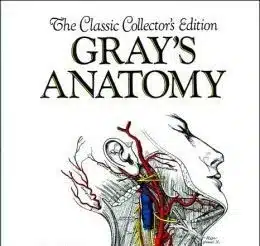![Henry Gray Portrait By H. Pollock - [1] [2], CC BY 4.0, https://commons.wikimedia.org/w/index.php?curid=1458730](https://elliottelford.com/wp-content/uploads/2023/11/Henry_Gray_bw_photo_portrait.jpg)
Henry Gray was an innovator and disruptor in the medical field with his surgically precise incisions and methodically meticulous explorations of the human anatomy. I love his work and have used the depictions from his book for much of my anatomy articles due to their lack of copyright.
Gray was born in Belgravia, London in 1827 and spent most of his life in London.
His book on human anatomy, Gray’s Anatomy, is still regarded as the anatomical bible of the scientific world. He was extremely precise and through his experience making painstakingly exact incisions and methodically mapping the physical anatomy of the human body. While still a student, Gray received the triennial prize of Royal College of Surgeons for his essay The Origin, Connexions and Distribution of nerves to the human eye and its appendages, illustrated by comparative dissections of the eye in other vertebrate animals.
The following year, at the age of 25, Gray won another prize for his essay on the Spleen(this is a fascinating read when you have time), and was elected a fellow of the Royal Society.
In 1858, Gray Published his first anatomy book of 750 pages and hundreds of figures by his friend Henry Vandyke Carter. They met at St. George’s School of Medicine. At first, when Gray wrote his essay on the spleen, Carter thought Gray was a snob. Over time and as they worked together more their respect for each other grew, largely due to their seriousness and commitment to the field of medicine. Initial conflict occurred with respect to the payment that Carter received from Gray for his designs, being in need of money, and that he judged inadequate for his commitment.[5]
The images from these two scientific heroes are timeless. And luckily for me, they are copyright free due to their age and remain some of the most powerful anatomical depictions. I use many of them in my anatomical articles on this website.
Henry Gray’s Death
Gray was struck by attack of confluent smallpox, a most deadly kind of disease. On 13 June 1861, the day he was to appear for an interview as a final candidate for a prestigious post at the St. George’s Hospital, he died at the age of 34.[3] He was buried at Highgate Cemetery.[4][5] Gray had been vaccinated against smallpox as a child with one of the early forms of the vaccine.[6]
He is assumed to have been infected due to his passionate care giving for his ten-year-old nephew, Charles Gray, who did recovered from the deadly disease.
The Style of the Book
had a major influence on science that has since but irreplaceable. It is reminiscent of the evolution of art from Classicism to Hellenism in Ancient Greek art, throughout the Renaissance and afterwards, in that the accurate and precise portrayal of the human form was the primary goal. Read more about the stylistic evolution of anatomy here.
You can buy a cool version of Gray’s Anatomy Here.
References:
- Henry Gray’s Anatomy of the Human Body
- Henry Gray on the Structure and Use of the Spleen
- Henry Gray Wikipedia Page
- Vandyke Carter (Henry) Wikipedia Page
- Royal Society Wikipedia Page – Royal Society Website
- The Making of Gray’s Anatomy
- Internet Archive of Gray’s Anatomy
- Style and Non-style in Anatomical Illustration

